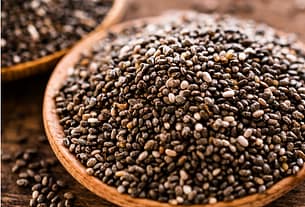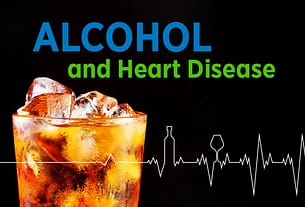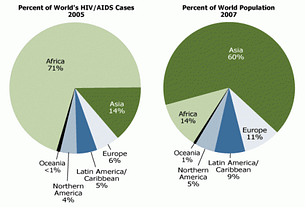AN old man falls in the bathroom and fractures his hip. An 80-plus woman, travelling in a car, has vertebral compression fracture (spinal). These are relatively common in an ageing population. A major reason behind frequent fractures in the elderly is the weakening of bones due to osteoporosis.
What is osteoporosis
In normal bones, solid bony tissue is separated by tiny spaces. In an osteoporotic bone, due to depletion of bony tissue, the spaces are quite wide, leading to weak bones that are prone to fracture even with minor trauma.
A normal bone keeps on rebuilding the bony tissue continuously. The age of 25-35 years is known as the age of peak bone mass. Women are affected by osteoporosis earlier (usually six years after the onset of menopause) than men due to hormonal changes. While men are affected after the age of 60, sexagenarian women suffer from severe osteoporosis because of its longer duration.
Before the actual onset of established osteoporosis, the bone passes through a transitional stage known as osteopenia.
As life expectancy has increased in India, the diseases of the elderly, including osteoporosis, have shown an exponential rise. In recent years, osteoporosis has emerged as a major public health problem and fractures in the elderly have risen manifold.
As per WHO estimates, one in three postmenopausal women suffer from osteoporosis. This number is likely to be higher in India due to poor nutritional practices among women. Out of a total of around six crore osteoporotic patients in India, 80 per cent are women. Further, the onset of osteoporosis in India is observed to occur 10–20 years earlier than in Western countries.
Why Healthy Bones Are Important to You

Strong bones support us and allow us to move. They protect our heart, lungs, and brain from injury. Our bones are also a storehouse for vital minerals we need to live. Weak bones break easily, causing terrible pain. You might lose your ability to stand or walk. And as bones weaken, you might lose height.
Silently and without warning, bones may begin to weaken early in life if you do not have a healthy diet and the right kinds of physical activity. Many people already have weak bones and don’t know it. Others are making choices that will weaken their bones later.
There are several kinds of bone disease. The most common is osteoporosis. In this disease, bones lose minerals like calcium. They become fragile and break easily. With osteoporosis, your body’s frame becomes like the frame of a house damaged by termites. Termites weaken your house like osteoporosis weakens your bones. If you have severe fractures from osteoporosis, you risk never walking again. Weak bones can break easily. This can be fatal.
Fragile bones are not painful at first. Unfortunately, most people don’t realize they have weakened bones until one breaks. By that time, it is hard to make your bones strong again.
Nutrition and Bone Health
The food that you eat can affect your bones. Learning about the foods that are rich in calcium, vitamin D and other nutrients that are important for your bone health and overall health will help you make healthier food choices every day. Use the chart below for examples of the different types of food you should be eating every day.
If you eat a well-balanced diet with plenty of dairy, fish, fruits and vegetables, you should get enough of the nutrients you need every day, but if you’re not getting the recommended amount from food alone, you may need to complement your diet by taking multivitamins or supplements.
Good-for-Your-Bones Foods
| FOOD | NUTRIENT |
|---|---|
| Dairy products such as low-fat and non-fat milk, yogurt and cheese | Calcium. Some dairy products are fortified with Vitamin D. |
| Fish | |
| Canned sardines and salmon (with bones) | Calcium |
| Fatty varieties such as salmon, mackerel, tuna and sardines | Vitamin D |
| Fruits and vegetables | |
| Collard greens, turnip greens, kale, okra, Chinese cabbage, dandelion greens, mustard greens and broccoli. | Calcium |
| Spinach, beet greens, okra, tomato products, artichokes, plantains, potatoes, sweet potatoes, collard greens, prunes and raisins. | Magnesium |
| Tomato products, prunes, raisins, potatoes, spinach, sweet potatoes, papaya, oranges, orange juice, bananas and plantains. | Potassium |
| Red peppers, green peppers, oranges, grapefruits, broccoli, strawberries, brussels sprouts, papaya and pineapples. | Vitamin C |
| Prunes. Dark green leafy vegetables such as kale, collard greens, spinach, mustard greens, turnip greens and brussel sprouts. | Vitamin K |
| Fortified Foods | |
| Calcium and vitamin D are sometimes added to certain brands of juices, breakfast foods, soy milk, rice milk, cereals, snacks and breads. | Calcium, Vitamin D |
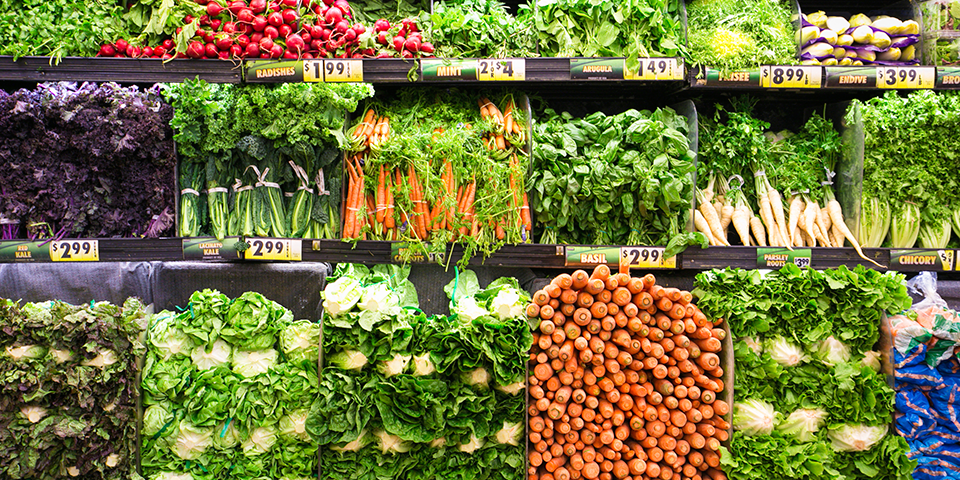
More Examples of Bone Healthy Food
Recent research has found that olive oil, soy beans, blueberries and foods rich in omega-3s, like fish oil and flaxseed oil may also have bone boosting benefits. While additional research is needed before the link between these foods and bone health can definitively be made, the many overall health benefits of these foods make them excellent choices to add to your diet. Studies have also shown that a moderate intake of certain alcoholic and non-alcoholic beverages like wine, beer and tea may also be good for your bones. More research is also needed to better help us to better understand the relationship between these drinks and bone health.
More Tips for Eating for Good Bone Health
Beans (Legumes)
While beans contain calcium, magnesium, fiber and other nutrients, they are also high in substances called phytates. Phytates interfere with your body’s ability to absorb the calcium that is contained in beans. You can reduce the phytate level by soaking beans in water for several hours and then cooking them in fresh water.
Meat and Other High Protein Foods
It’s important to get enough, but not too much protein for bone health and overall health. Many older adults do not get enough protein in their diets and this may be harmful to bones. However, special high protein diets that contain multiple servings of meat and protein with each meal can also cause the body to lose calcium. You can make up for this loss by getting enough calcium for your body’s needs. For example dairy products, although high in protein, also contain calcium that is important for healthy bones.
Salty Foods
Eating foods that have a lot of salt (sodium) causes your body to lose calcium and can lead to bone loss. Try to limit the amount of processed foods, canned foods and salt added to the foods you eat each day. To learn if a food is high in sodium, look at the Nutrition Facts label. if it lists 20% or more for the % Daily Value, it is high in sodium. Aim to get no more than 2,300 mg of sodium per day.
Spinach and Other Foods with Oxalates
Your body doesn’t absorb calcium well from foods that are high in oxalates (oxalic acid) such as spinach. Other foods with oxalates are rhubarb, beet greens and certain beans. These foods contain other healthy nutrients, but they just shouldn’t be counted as sources of calcium.
Wheat Bran
Like beans, wheat bran contains high levels of phytates which can prevent your body from absorbing calcium. However, unlike beans 100% wheat bran is the only food that appears to reduce the absorption of calcium in other foods eaten at the same time. For example, when you have milk and 100% wheat bran cereal together, your body can absorb some, but not all, of the calcium from the milk. The wheat bran in other foods like breads is much less concentrated and not likely to have a noticeable impact on calcium absorption. If you take calcium supplements, you may want to take them two or more hours before or after eating 100% wheat bran.
Alcohol
Drinking heavily can lead to bone loss. Be sure to limit alcohol consumption.
Caffeine
Coffee, tea and soft drinks (sodas) contain caffeine, which may decrease calcium absorption and contribute to bone loss. Choose these drinks in moderation.
Coffee/Tea
Drinking more than three cups of coffee every day may interfere with calcium absorption and cause bone loss.
Don’t Risk Your Bones
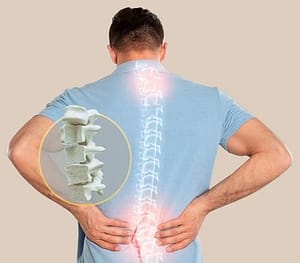
Risk factors
Too many of us assume we are not at risk for bone loss or fractures. We believe that if we haven’t had any signs of bone damage, then our bones are strong. Because there are no obvious warning signs, even doctors often miss signs of the problem. Most of us have our blood pressure and cholesterol checked for heart health. Testing bone density is an important way to check for bone health.
The risk of osteoporosis is highest among women. It is also higher for whites and Asians than other groups. However, it’s important to remember that it is a real risk for older men and women of all backgrounds.
Here are some clues that you are at risk:
- Your older relatives have had fractures.
- You have had illnesses or have been on medications that might weaken bones.
- You are underweight.
That’s why it is important to know the risks for poor bone health at all ages. There are many “red flags” that are signs that you are at risk for weak bones. (See “Are you at risk for weak bones?” checklist.) In addition, your calcium and vitamin D intake, level of physical activity, and medications should all be evaluated.
The risk factors include smoking, alcohol consumption, sedentary lifestyle, poor nutrition, calcium and vitamin D deficiency, long-term intake of some drugs and certain hormonal diseases.
Osteoporosis is known as a silent killer because it does not have any symptoms. The disease only comes to light when one suffers an osteoporotic fracture due to some minor injury. The common areas are the spine (vertebral column), the hip region and wrist. Other areas like shoulder, ankle and elbow may also suffer. Even jaw bones are affected and the anchorage of teeth in the jaw bones starts becoming loose. In severe osteoporosis, the teeth start falling.
Prevention and treatment
A lifestyle disease, osteoporosis is largely preventable by having a healthy lifestyle, avoiding alcohol and smoking, along with regular physical activity (walking/yoga/light weight training), can keep your bones healthy.
In addition, regular exposure to direct sunlight of at least 30 per cent bare skin (not covered with clothes and not through glass) for at least 30 minutes every day helps to keep vitamin D levels normal that are essential to prevent osteoporosis. Calcium is an important constituent of the bony tissue and a balanced diet containing milk products, green vegetables and protein prevents nutritional osteoporosis. However, rising consumption of junk food, particularly among the young when bone growth is maximum, is creating a severe nutritional imbalance and may lead to even greater number of osteoporosis cases in the future. However, with the increase in surgical expertise and advanced technology, the osteoporotic fractures have become treatable effectively now.
As prevention remains the best medicine, a periodic screening after menopause in women and men after the age of 60 years (at earlier age for high-risk individuals) helps to detect the onset of osteoporosis that is treatable with drugs and healthy lifestyle.
Protect Your Bones at Every Age
People of all ages need to know what they can do to have strong bones. You are never too old or too young to improve your bone health.
Babies
Bone growth starts before babies are born. Premature and low-birth-weight infants often need extra calcium, phosphorus, and protein to help them catch up on the nutrients they need for strong bones. Breastfed babies get the calcium and nutrients they need for good bone health from their mothers. That’s why mothers who breastfeed need extra vitamin D. Most baby formula contains calcium and vitamin D.
What if your toddler doesn’t like to drink milk?
- Include some low-fat cheese chunks or yogurt for snacks.
- Make a cheesy sauce for vegetables or for a dip.
- Offer strawberry or chocolate milk as an afternoon treat.
Good bone health starts early in life with good habits. While children and young adults rarely get bone diseases, kids can develop habits that endanger their health and bones. Parents can help by encouraging kids to eat healthful food and get at least an hour of physical activity every day. Jumping rope, running, and sports are fun activities that are great for building strong bones. Children need the amount of calcium equal to 3 servings of low-fat milk each day. If your child doesn’t drink enough milk, try low-fat cheese, yogurt, or other foods that are high in calcium. If your child is allergic to milk or lactose intolerant, talk to your pediatrician about milk substitutes.
Fast Fact
Children and teens should get at least an hour of physical activity every day. Adults should get at least 2 hours and 30 minutes each week.
Teens
Teens are especially at risk for not developing strong bones because their bones are growing so rapidly. Boys and girls from ages 9 to 18 need 1,300 milligrams of calcium each day, more than any other age group. Parents can help teens by making sure they eat 4 servings of calciumrich and vitamin D-fortified foods a day. At least 1 hour a day of physical activities—like running, skateboarding, sports, and dance—is also critical. But take note: extreme physical exercise, when combined with undereating, can weaken teens’ bones. In young women, this situation can lead to a damaging lack of menstrual periods. Teens who miss adding bone to their skeletons during these critical years may never make it up.
Adults
Adulthood is a time when we need to look carefully at our bone health. As adults, we need 1,000 to 1,200 milligrams of calcium, depending on our age, and at least 2 hours and 30 minutes per week of moderate-intensity physical activity. Activity that puts some stress on your bones is very important.
Adults: keep your bones strong with physical activity.
- Physical activity at least 2 hours and 30 minutes each week
- Muscle training activities on 2 days a week
- Older adults should do exercises that maintain or improve balance if they are at risk of falling
Seniors
Seniors can take steps to help prevent bone problems. Physical activity and diet are vital to bone health in older adults. Calcium, together with vitamin D, helps reduce bone loss. Activities that put stress on bones keep them strong. Find time for activities like walking, dancing, and gardening. Strengthening your body helps prevent falls. Protecting yourself against falls is key to avoiding a broken hip or wrist. All women over age 65 should have a bone density test.
Seniors should also know that recent studies conclude that anyone over age 50 should increase his or her vitamin D intake to 600 International Units (IU) per day. After age 70, 800 IU per day are needed.
Falls Break Bones
You can prevent most falls.
Falls are not just the result of getting older. But as you age, falls become more dangerous. Most falls can be prevented. By changing some of the things listed here, you can lower the chances of falling for you or someone you love.
- Begin a regular exercise program.
Exercise is one of the most important ways to reduce your chances of falling. It makes you stronger and helps you feel better. Exercises that improve balance and coordination, like dancing and Tai Chi, are the most helpful. Consider joining an organized program at your local community center or gym. - Make your home safer.
- Remove things you can trip over from stairs and places where you walk.
- Remove all small rugs.
- Don’t use step stools. Keep items you need within easy reach.
- Have grab bars put in next to your toilet and in the bathtub or shower.
- Use nonslip mats in the bathtub and shower.
- Use brighter light bulbs in your home.
- Add handrails and light in all staircases.
- Wear shoes that give good support and have nonslip soles.
- Ask a health care professional to review your medicines.
Ask your doctor, nurse, pharmacist, or other health care professional to review all the medicines you are taking. Make sure to mention over-the-counter medicine, such as cold medicine. As you get older, the way some medicines work in your body can change. Some medicines, or combinations of medicines, can make you drowsy or light-headed, which can lead to a fall. - Have your vision checked.
Poor vision increases your risk of falling. You could be wearing the wrong glasses or have a condition such as glaucoma or cataracts that limits your vision.
Live Well, Live Strong, Live Long
The average American eats too little calcium. And nearly half of us do not get enough physical activity to strengthen our bones.
The same healthy lifestyle that strengthens your bones strengthens your whole body. You might not hear as much about bone health as other health concerns. But healthy habits are good for all your organs, including your bones.
- Be physically active every day—at least 60 minutes for children and teens, and 2 hours and 30 minutes each week for adults. Do strength-building and weight-bearing and resistance exercises to build strong bones.
- Eat a healthy diet. Educate yourself on proper nutrition. Be aware that certain foods are naturally rich in calcium and vitamin D. Get the recommended amounts of calcium and vitamin D daily.
- Reduce your risks of falling. Check your home for loose rugs, poor lighting, etc. Take classes that increase balance and strength—like Tai Chi or yoga. Make stretching a part of your workout.
Even people who know better don’t always do what’s good for their bones. Make yourself an exception. Be aware of your risks and work to reduce them. Get help from your family and friends and your doctor, nurse, pharmacist, or other health care professional. Building healthy bones begins at birth and lasts your whole life.
Your Doctor Can Help Protect Your Bones
Talk to your doctor about bone health. Together you can evaluate your risks. Some things to discuss include your current health, your diet and physical activity levels, and your family background.
Your doctor can look at your age, weight, height, and medical history. From that he or she can determine if you need a bone density test. Broken bones are a “red flag” for your doctor. If you break a bone after the age of 50, talk to your doctor about measuring your bone density. Even if you broke a bone in an accident, you might have weak bones. It is worth checking.
Your doctor might recommend a medical test called a bone mineral density test. These tests are quick (5 to 10 minutes), safe, and painless. They will give you and your doctor an idea of how healthy your bones are. All women over age 65 should have a bone density test. Women who are younger than age 65 and at high risk for fractures should also have a bone density test.
Your doctor might also want to do a blood test to check for a vitamin D deficiency or abnormal calcium levels.
If your doctor finds that your bones are becoming weaker, there are things you can do to make them stronger. You can be more physically active, change your diet, and take calcium and vitamin D supplements. If your bones are already weak, there are medicines that stop bone loss. They can even build new bone and make it less likely that you will suffer a broken bone.
Your doctor might suggest medications to help you build stronger bones. To reduce the chance that you might fall, have your vision checked. When you speak to your doctor, be prepared with a list of questions and concerns. The list on the next page should help get you started.
Fast Fact
All women over age 65 should have a bone density test.
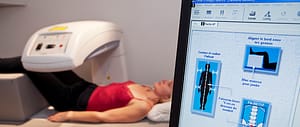
Are you at risk for weak bones?
- Check any of these that apply to you.
- I’m older than 65.
- I’ve broken a bone after age 50.
- My close relative has osteoporosis or has broken a bone.
- My health is “fair” or “poor.”
- I smoke.
- I am underweight for my height.
- I started menopause before age 45.
- I’ve never gotten enough calcium.
- I have more than two drinks of alcohol several times a week.
- I have poor vision, even with glasses.
- I sometimes fall.
- I’m not active.
- I have one of these medical conditions:
- Hyperthyroidism
- Chronic lung disease
- Cancer
- Inflammatory bowel disease
- Chronic hepatic or renal disease
- Hyperparathyroidism
- Vitamin D deficiency
- Cushing’s disease
- Multiple sclerosis
- Rheumatoid arthritis
- I take one of these medicines:
- Oral glucocorticoids (steroids)
- Cancer treatments (radiation, chemotherapy)
- Thyroid medicine
- Antiepileptic medications
- Gonadal hormone suppression
- Immunosuppressive agents
If you have any of these “red flags,” you could be at high risk for weak bones. Talk to your doctor, nurse, pharmacist, or other health care professional.



